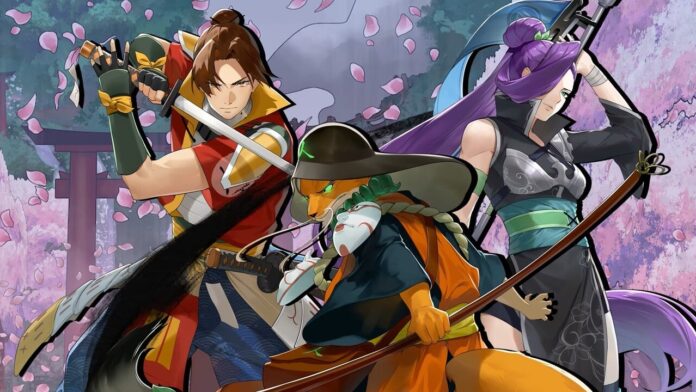In all the world, few things are as powerful as language. We use it to communicate all our hopes and fears and inner thoughts to each other. Words have a power all their own, which is why Shujinkou struck me as such an interesting concept; a JRPG that aims to teach players the fundamentals of Japanese. While I applaud the ambition behind that lofty goal, the Switch port of Rice’s dungeon-crawling-focused RPG held some technical missteps that keep it from truly shining.
Like many JRPG fans who don’t speak Japanese, I’ve always had an ambition to learn. After two years of lessons, I could count myself as conversational; I was able to make my way around Japan on multiple trips without embarrassing myself, but couldn’t call myself anywhere near fluent. Shujinkou doesn’t seem like it is going to help anyone reach fluency — the lack of voice acting so you can hear the words and symbols you are learning prevents that — but the aim here is to hammer home the basics, and that is something the game does remarkably well.
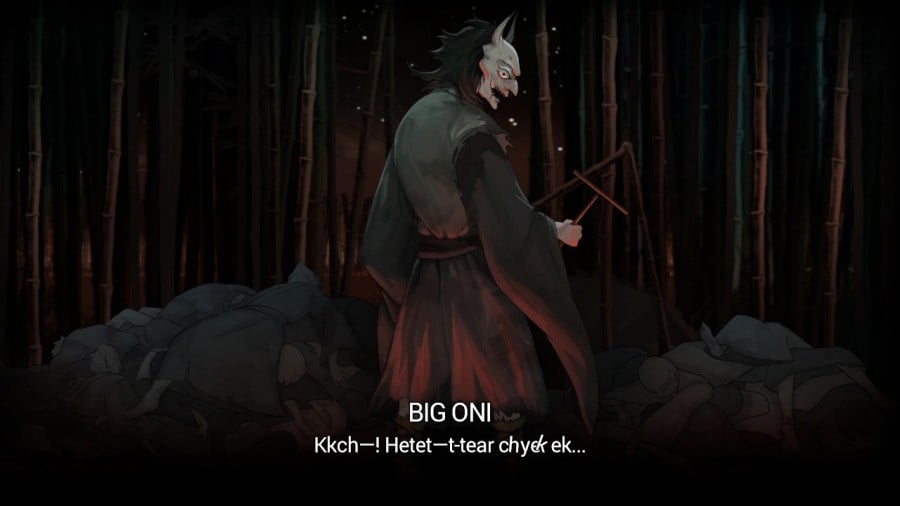
Combat in Shujinkou centres around Japanese words. Creatures pop up at semi-random intervals and attack your party. You can fight them with your swords, but early on, you unlock the power of Kanakae Orbs, each of which contains a symbol from one of two Japanese syllabaries, hiragana and katakana. Each character can equip up to five of these Kanakae Orbs and choose one per turn to attack with. If the symbol you attack with is in the enemy’s name, you’ll do extra damage.
This is a fun mechanic, and it will help you learn the names of the animals you come across. The first dungeon, for example, is filled with cats (neko), dogs (inu), birds (tori), and demons (oni). Remembering the Japanese word for these common creatures is essential to getting through the many battles you’ll face in the game. The game also throws in some vocabulary in the menu and in dialogue, giving you the option to have a translation of certain words as they are dropped into conversation.
I will note that some of these translations are less helpful than others. While it is useful to know that ‘chizu’ means map, it is somewhat baffling that it offers a translation of ‘shogun’ as simply shogun or ‘daimyo’ as daimyo, with no effort to explain the English equivalent of those terms. It was a small detail that struck me as humorous, considering how much effort went into making the language lessons a core part of the gameplay.
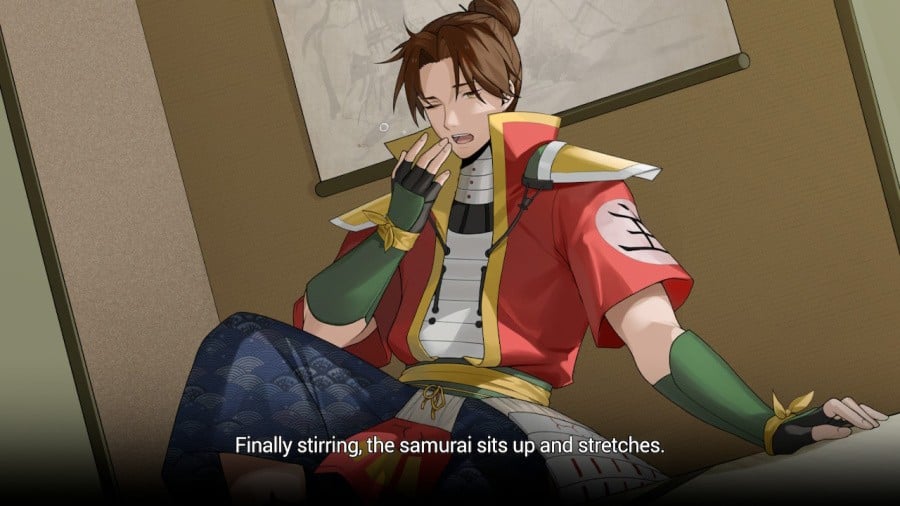
Battles take place in dungeons scattered around the map. Fans of the Etrian Odyssey series will immediately spot the influence here. While towns feel like something out of a point-and-click adventure like Monkey Island, dungeons switch to a first-person perspective. A map is given and must be filled in as you travel through it, complete with one-way passages and doors. Most monsters appear randomly, with a symbol in the lower right corner giving you an indication of how likely you are to be attacked as you explore.
These battles can be difficult enough, with some deadly enemies coming out of nowhere, even in the first one, to deliver a devastating party wipe, but the real danger comes from the larger enemies that roam the map.
In Shujinkou, these are called Yaiuu, but Etrian Odyssey fans will recognise these as reskins of the iconic Field On Enemies (FOEs) from that series. They pursue you around the map and are significantly more powerful than the standard enemies you run into. When you first encounter them, you should avoid them at all costs, though you’ll probably want to grind in each dungeon until you can comfortably take them on. I spent a lot of time running through the dungeon, jumping back to town to heal and upgrade my equipment before setting off to try my luck again.
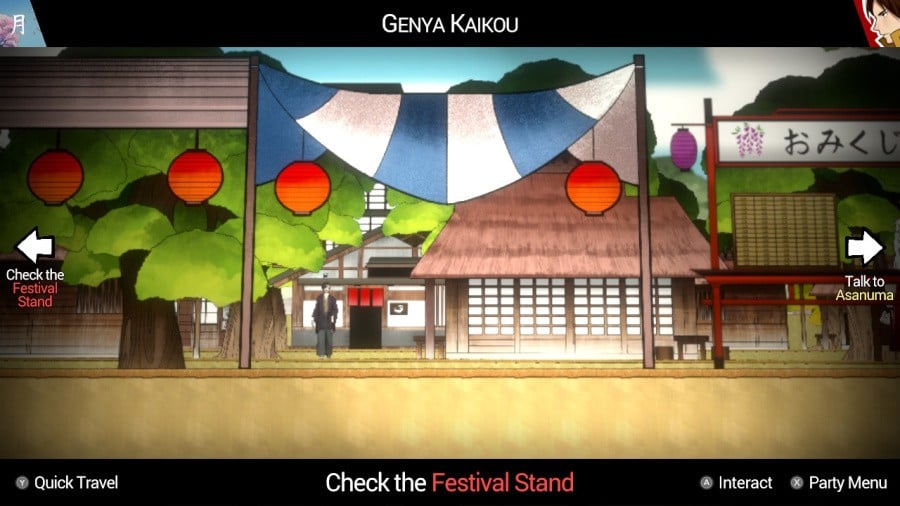
The combat in Shujinkou is better than the rest of it, unfortunately. The characters and scenery are all flat, standing there doing the gentle swaying that I usually associate with a Flash game. The graphics are simple, but they work during the also-simple cutscenes; where I struggled with them was in navigating through the towns. Because everything is 2D, towns become awkward to move around in. Trying to remember where anything is becomes a chore, especially in areas larger than the starting town.
The actual enemies look better, with an almost watercolour feel to them that fits with the world Shujinkou is building. Similarly, the music is very Japanese-inspired, with a high-pitched whistle at the start of combat that feels straight out of a samurai film. It is a little predictable but, again, it works within the world.
Some small questionable narrative choices — we’re expected to believe that Shu retired as a samurai at the age of 24, for example — are overshadowed by the unique combat system that centres language-learning without making it feel like an educational game.
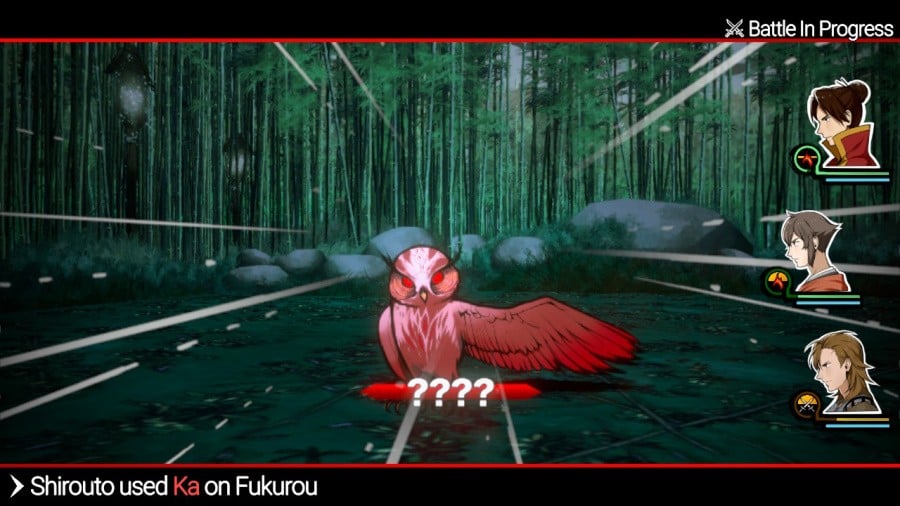
My biggest complaints from my time with Shujinkou are things that I expect are only present in the Switch port. The non-combat inputs aren’t intuitive, so I found myself opening the party menu when I meant to close the map constantly, and I would have given anything for a quick save feature. There are also long load times that are thankfully infrequent but still frustrating.
Language is at the heart of Shujinkou, but it is much more than an educational game. There is a solid, unique dungeon crawler in here, which is refreshing considering how underrepresented the genre has been in recent years. A unique combat system overshadows the basic art, counterintuitive controls, and frustrating town navigation.
Conclusion
You won’t become fluent in Japanese by playing Shujinkou, but it will introduce the basics of both hiragana and katakana to you in a game that features the best bits of the Etrian Odyssey series in a very clever way. The combat system is solid enough that not even the counterintuitive menus could keep me from diving back in for more.
